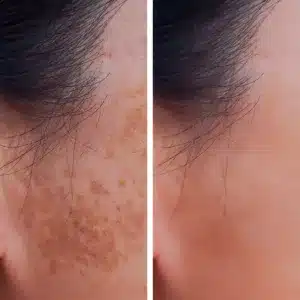Laser hair removal offers a long-term solution to unwanted body and facial hair. However, as an elective cosmetic procedure, it pays to understand the potential side effects like scarring and pigmentation changes. This allows you to make informed decisions and take proactive measures for optimal outcomes.
Here, Qatar’s top skin health clinic, The Pearl Dermatology, provides science-backed insights into navigating post-laser hair removal effects.
Understanding Potential Pigmentation Changes
While relatively rare with proper protocols, you may observe skin darkening (hyperpigmentation) or lightening (hypopigmentation) after treatment. This relates to changes in melanin production stemming from laser damage to melanocytes. Typically temporary, strict sun protection aids healing.
Factors Influencing Scarring Potential
Variables like skin type, technician skill, and aftercare impact scarring likelihood. Darker skin is often more prone to keloids and hypertrophic markings. Opting for an experienced clinic like The Pearl Dermatology with rigorous standards minimizes risks.
Grading Scar Severity
We grade scarring as mild, moderate, or severe. Superficial minor injuries usually heal well, while deep cuts or burns often leave more stubborn marks. Scarring can manifest as raised, sunken, or discolored patches. Overall skin health also plays a role.
Tailoring Management Strategies
Protecting freshly lasered skin from sunlight avoids aggravating inflammation and pigment changes. Gentle topical treatments with vitamin C, retinol, and hydroquinone expedite lightening. For severely raised or pitted scars, physicians may suggest laser resurfacing, dermabrasion, or other corrective treatments.
Coping With Lasting Effects
While most patients see side effects fade within weeks, some require longer intervention. Occasionally, permanent pigmentation or textural changes arise. Fortunately, advanced cosmetic procedures offered at The Pearl Dermatology aid greatly in camouflaging stubborn skin damage.
Additional Risk Management Approaches
Beyond expert technicians and strict sun avoidance, managing expectations is key. Have a candid discussion about your unique risks. Adhere properly to prep protocols and post-treatment guidelines. Promptly call your provider if you have concerns during your healing process.
Arming yourself with knowledge about scarring and pigmentation possibilities allows you to take proactive measures for your best skin ahead. Trust Qatar’s leading clinic, The Pearl Dermatology, for science-backed insights and tailored solutions.
Frequently Asked Questions
Can Scarring and Pigmentation Changes Occur After Other Cosmetic Procedures Besides Laser Hair Removal?
Scarring and pigmentation changes can occur after other cosmetic procedures besides laser hair removal. It’s important to discuss potential risks and side effects with your provider before undergoing any procedure.
Are Certain Skin Types More Prone to Scarring and Pigmentation Changes?
Certain skin types may be more prone to scarring and pigmentation changes. It’s essential to consult with a dermatologist or cosmetic professional to determine if your skin type is at risk.
Can Scarring and Pigmentation Changes Be Permanent?
Scarring and pigmentation changes can be permanent. Taking proper care of your skin is essential to minimize the risk. Consult with a dermatologist for personalized advice and treatment options.
Are There Any Natural Remedies That Can Help in Managing Scarring and Pigmentation Changes?
Do you want to know how to manage scarring and pigmentation changes naturally? Well, some remedies can help. Stick around, and I’ll share them with you.
How Long Does It Typically Take for Scarring and Pigmentation Changes to Fade or Improve?
Typically, scarring and pigmentation changes take time to fade or improve. However, the duration varies depending on factors like your skin type and the severity of the condition. Consulting a dermatologist can provide better insight into your specific case.


Leave A Comment
You must be logged in to post a comment.